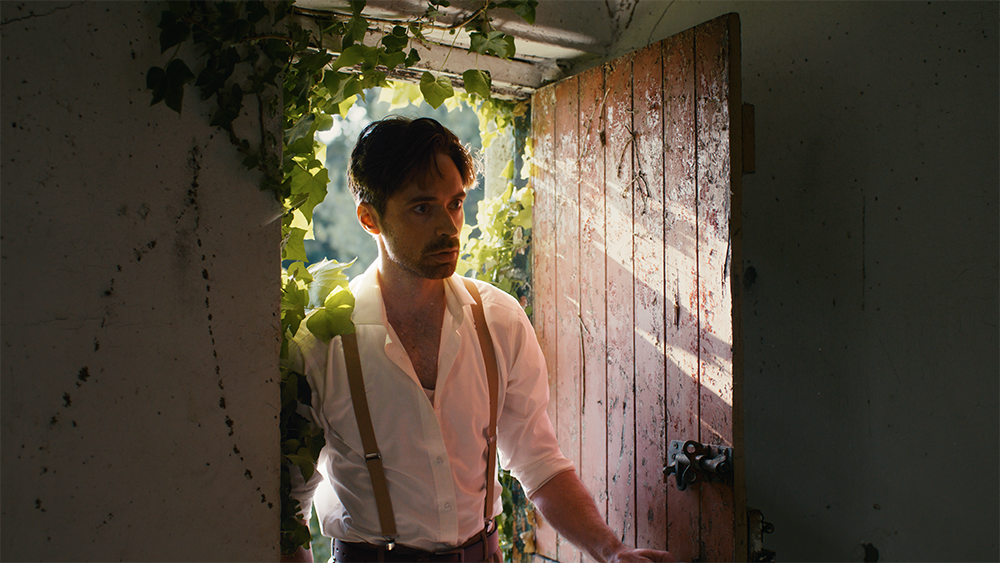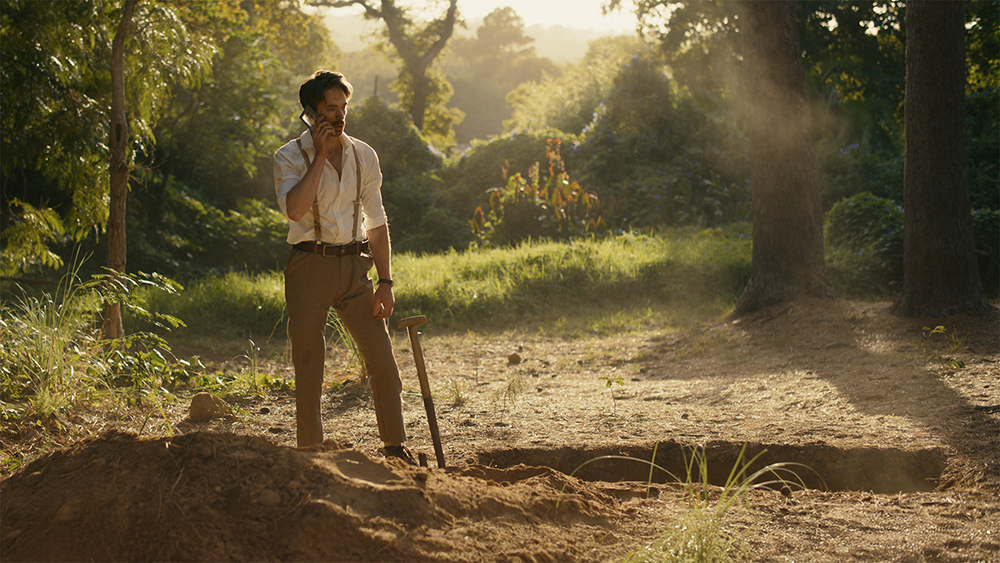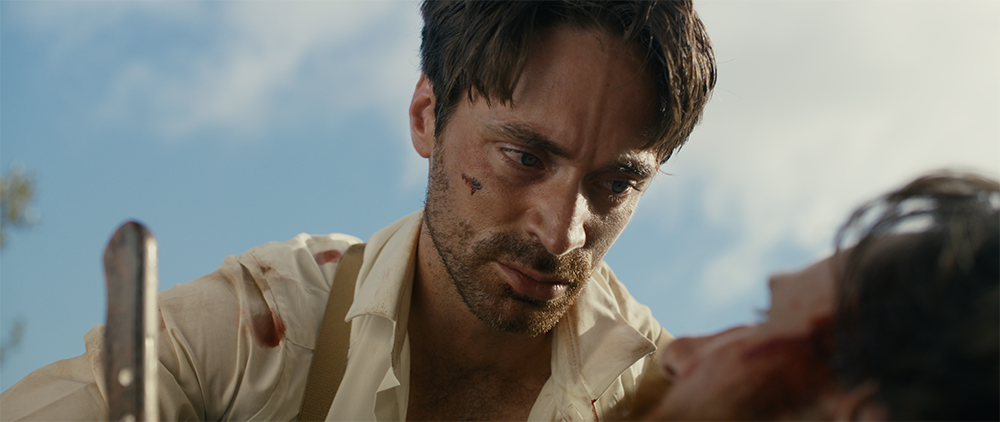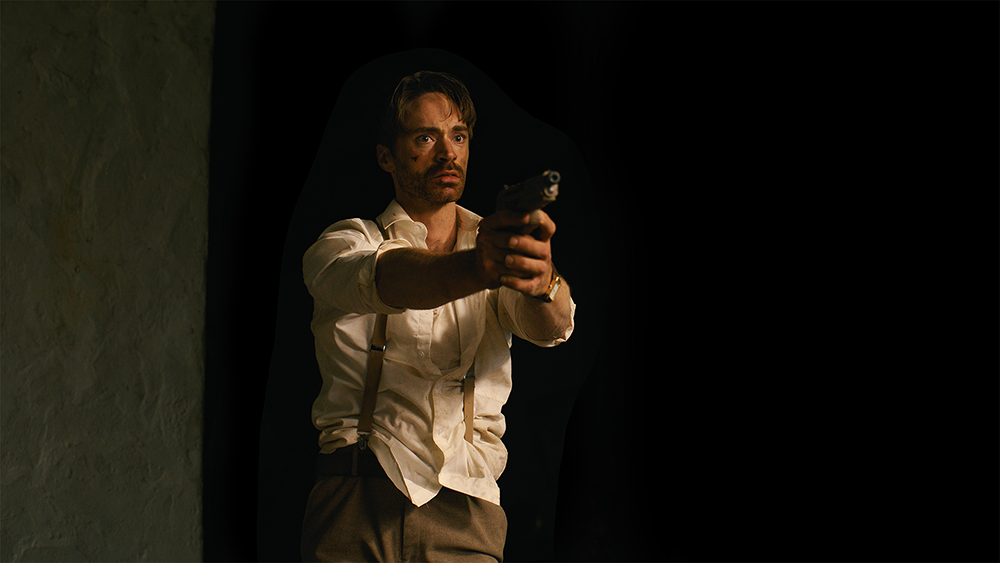



Short film by an established filmmaker: Hier
In Hier, director and screenwriter Robert dos Santos delivers a time-bending tale that fuses intimate storytelling with cinematic spectacle. Featuring only three cast members, the film explores themes of time travel, memory, and survival, while transitioning through a range of genres, including romance, thriller, mystery, sci-fi, action, and drama. Set against a backdrop of epic scale and visual richness, Hier offers a rare kind of narrative experience within the short film format.
Robert shared more about the inspiration behind the film and reflected on what makes it not only timely but also deeply resonant for South African and global audiences alike.
What originally inspired you to explore the concept of time travel and warfare? And why is now the right moment to tell this story?
I want to tell big, exciting stories that are larger than life but still feel personal and intimate. I want audiences to sit back and say, “Wow, this is a fun ride”, but I also want them to leave the cinema with something to discuss on the drive home.
The timing felt right because it reflects where I believe South African film and television are heading, and what audiences are eager to see. For too long, we’ve admired international filmmakers creating bold stories while limiting our own ambitions. I truly believe we’ve evolved as an industry over the past decade, and we’re now capable of producing films that can shake the world. With streaming platforms and a global appetite for diverse content, there’s never been a better time to move beyond the traditional Hollywood formula.
Filmmaking is under pressure from social media and short-form content, which means we need to meet audiences where they are: hungry for entertainment that’s both fun and epic.
With only three actors, the dynamic between the characters had to be powerful and believable. How did you prepare the cast for such commanding tension?
We held our rehearsals inside a cinema to immerse ourselves in the world we were creating and to focus without distraction. It was a cosy, comfortable environment – sitting on the red-carpeted floor with biltong and popcorn, reading the script multiple times to understand our characters’ goals and intentions. We created an open space where we could interrogate the text, offer feedback, and shape the performances together.
That said, David Viviers, Anja Taljaard, and Milton Schorr are incredibly talented actors. Their audition tapes were so strong that very little preparation was needed. They each arrived with such clear, powerful performances that my role was more about maintaining the momentum than building it from scratch.
How long did filming take, and what was the most challenging scene to shoot – and why?
The fight scene was both the greatest challenge and the most fun I’ve ever had on set. Since I’m currently developing an action series for MultiChoice, it was essential to prove that I could execute a compelling action sequence, even on a small scale.
We originally scheduled a full day for the sequence, but due to weather and cast availability, we had to get it done in four hours – and we did.
What does the title Hier (‘Here’) mean to you within the context of time travel and memory?
The only thing we can ever be certain of is the present moment: where we are, here and now. When travelling through time, ‘here’ is really all you have.
Can you remember the very first word or sentence you wrote when you started working on this film?
I don’t remember the exact first word, but I do remember how the idea started. I was in a boardroom with producers Byron Davis and Chris Harvey, brainstorming concepts and struggling to come up with ideas.
At one point, Chris stepped out, and out of frustration, I threw out a wild idea in response to something Byron said. I suggested we challenge ourselves by blending multiple genres – romance, thriller, mystery, sci-fi, action, and drama – into one coherent story. Byron was all for it, and when Chris returned, he walked into a room that was already celebrating. So, the story began as a creative challenge: could we combine six genres and still make it feel seamless?
The film feels like an epic historical drama. How did you manage to achieve such a grand scale within the limitations of a short film format?
Given the rise of social media, streaming, and the decline of traditional revenue models like DVDs and box office sales, we knew we had to be smart with our resources. I’ve had the good fortune of gaining experience across the entire filmmaking process – from writing and directing to post-production and distribution. Our team at And Films obsesses over pre-production. We believe in measuring twice and cutting once.
Still, none of this would have been possible without an incredible team. Chris Lotz crafted stunning visuals. Sumaya Wicomb built a grounded, expansive world. Our cast brought emotional depth and precision.
Morné du Toit and the sound team created sonic layers that added scale, while Edward King’s music was both intimate and cinematic. All of it came together under the guidance of producers Byron Davis and Suraya Suliman. Simply put, the scale was a result of the talent and commitment of everyone involved.
